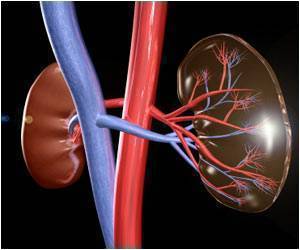
‘Any breach of sterile conditions in the operation room will cause infections to the critically ill patients and can lead to permanent disability in them.’
Tweet it Now
Surgeons Ask, 'Are We Contaminated Before We Cut?'The researchers designed an experiment to assess possible breaches of sterility during the gowning step before surgery. The study simulated a two-person gowning procedure in which a surgical technician unfolds the gown and holds it open for the surgeon to slide his/her arms through.
The potential for contamination was monitored by coating the surgical technician's gown with a special resin that glows under ultraviolet light. If any of the glowing resin was detected on the surgeon's gown after the procedure, it was considered a contamination event. Three orthopaedic surgeons and three experienced technicians performed a total of 27 gowning procedures.
The results showed evidence of cross-contamination in 67 percent of gowning procedures. All areas of contamination, as shown by glowing of the resin under ultraviolet light, were on the sleeves of the surgical gown.
The surgeons and technicians were selected based on variations in height: in both groups, one participant was tall, one medium height, and one short. The surgeon's height was a significant source of variation, with the tallest surgeon having the greatest amount of contamination of the gown of the sleeve.
Advertisement
Following sterile technique is critical for everyone working in the OR. "Any breach of sterile technique can lead to contamination, which ultimately may lead to infection," the researchers write. This is especially important in orthopaedic surgery because of the frequent use of implantable materials. While several OR procedures have been studied to assess their impact on contamination rates, this is the first study to assess the process of putting on surgical gowns.
Advertisement
While acknowledging their study's small size, Dr. Panas and coauthors write, "this study identifies a common and overlooked pattern of sterile field contamination." They suggest that a single-person gowning procedure - where the gown is handed to the surgeon, who then puts it on without assistance - can eliminate this source of contamination and help to optimize sterile technique in the OR.
"Postoperative infections can be life changing in the critically ill and can lead to permanent disability, loss of limb, or worse," Dr. Panas comments. "We hope our work gives surgeons of all specialties one more tool to accomplish our ultimate goal as healthcare providers, which is the optimization of patient care."
Source-Eurekalert









